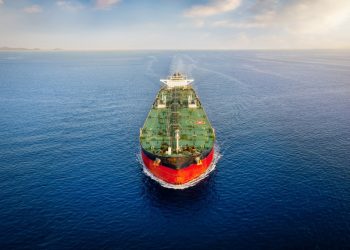Saudi Arabia offered more crude to Asian refiners in July
 Rates for crude oil tankers on key Asian freight routes are seen mixed with the Middle East benchmark route supported by rising exports from Saudi Arabia, while intra-Asia trade stays under pressure due to an oversupply of tonnage.
Rates for crude oil tankers on key Asian freight routes are seen mixed with the Middle East benchmark route supported by rising exports from Saudi Arabia, while intra-Asia trade stays under pressure due to an oversupply of tonnage.
For clean tankers, rates are expected to stay at weak levels due to limited oil products demand in Asia and the arrival of more vessels to the market, shipbrokers said on Tuesday.
Rates for long-haul crude shipments were expected to find support from rising exports from Saudi Arabia. The world’s top oil exporter offered more crude to Asian refiners in July, evidence that it is taking steps to unilaterally increase supplies after OPEC talks collapsed last week.
Rates on the benchmark Very Large Crude Carrier (VLCC) export route from the Middle East to Japan rose to W58.53 on Monday from W55.07 last week. The market hit a two-month high of W58.60 on Friday.
“Saudi is providing some much needed good news to an otherwise weak market,” said a Singapore-based shipbroker.”But the added supplies will still not be enough to cover all the new arrivals, so we will only see a small rise in rates for a short period.”
For other Asia-bound crude freight markets, the picture was more bearish.
The Baltic Exchange’s rate for 260,000-tonne crude tankers from West Africa to China fell to a two-week low of W53.29 from W55.25 last week.
“Suezmax rates should hold steady during the week ahead, with small gains possible on the back of higher bunker prices,” said broker firm Charles R. Weber.
The market came under pressure by Shell’s force majeure on Nigerian Bonny Light crude oil shipments for June and July following production cutbacks caused by leaks and fires on its Trans-Niger Pipeline.
Shell’s Nigerian SPDC unit said the leaks — caused by saboteurs who used hacksaws — had been repaired and production resumed on June 12, but the shutdown of the lines had affected loading programmes at its Bonny export terminal.
“As expected this week has yet to get started on the July dates,” said broker firm ICAP. “West Africa remains quiet. All that was reported was force majeure declared by Shell in Bonny.”
Rates for 80,000-tonne aframax tankers from Southeast Asia to East Coast Australia eased to a three-month low of W96.56 from W98.39 last week.
Clean rates for Long Range 1 (LR1) tankers on the benchmark Middle East to Japan route dropped to a three-month low of W121.00 from W131.08 last week due to lingering oversupply problems and limited demand.
“The tonnage list is looking thinner, therefore we would not expect to see rates falling further,” ICAP said.
“However, there is downward pressure from hangover tonnage and we feel a period of stabilisation is most likely before rates improve.”
Asian demand for naphtha shipments was expected to remain weak due to a prolonged cracker outage in Taiwan and limited opportunities to move Gulf or Mediterranean barrels for now to Europe, which could mean higher supplies in Asia.
In the intra-Asia market, medium range (MR) tankers travelling from Singapore to Japan fell to W153.29 from W155.07 last week.
Source: Reuters































































